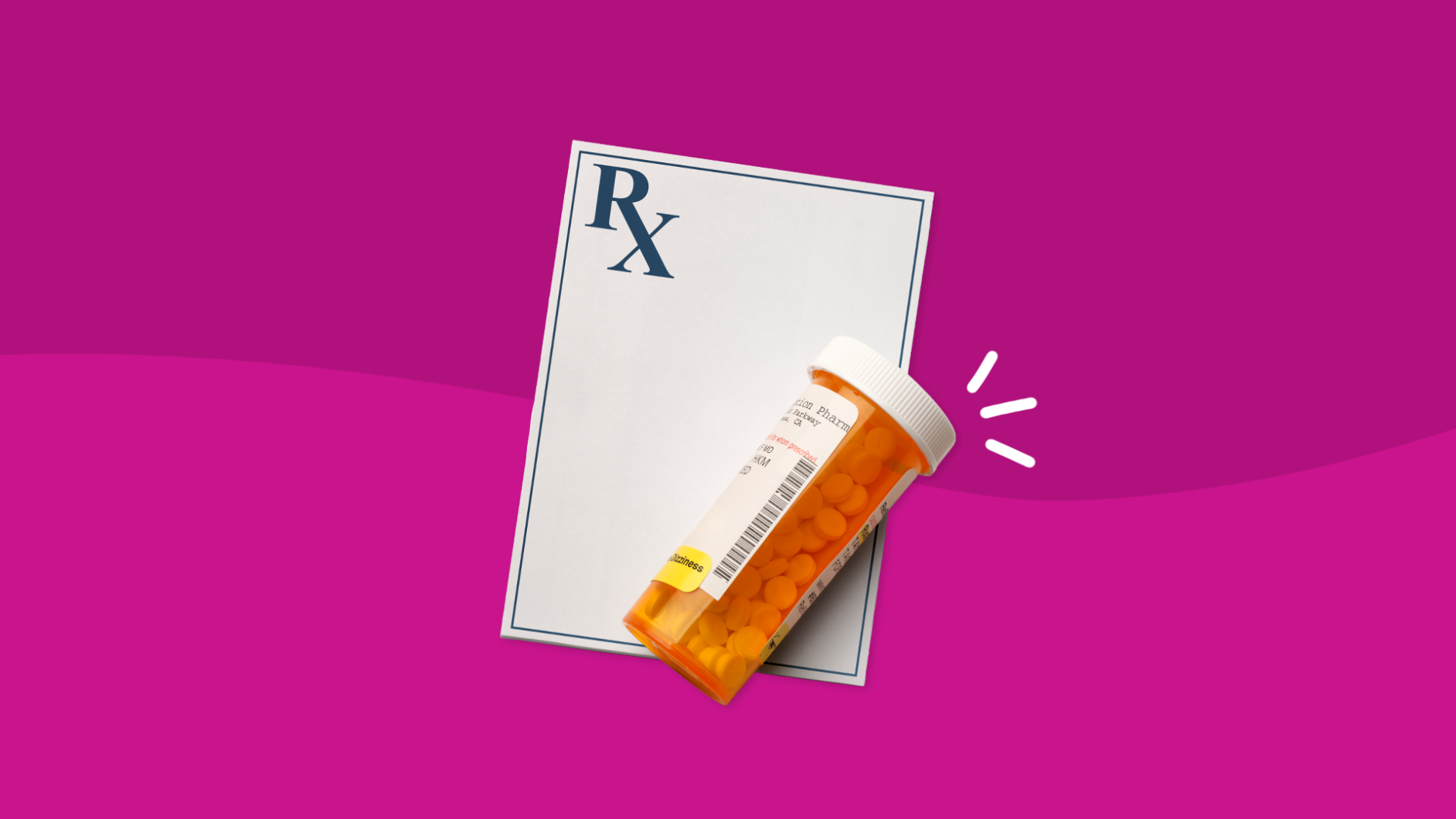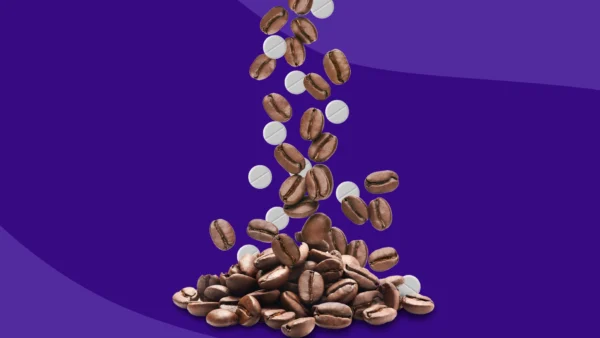Glipizide side effects | Weight gain | Hair loss | Serious side effects | Kidney damage | How long do side effects last? | Warnings | Interactions | How to avoid side effects
Glipizide is an anti-diabetic medication that helps treat Type 2 diabetes mellitus by controlling blood sugar and insulin levels. Glipizide is the generic version of the brand-name medication called Glucotrol and may be prescribed in a regular or extended-release form. It helps people manage their diabetes, but as with all medications it can cause side effects, worsen some medical conditions, and interact with other medications. Let’s take a more in-depth look at glipizide side effects and how to avoid them.
Common side effects of glipizide
The most common side effects of glipizide are:
- Diarrhea
- Dizziness
- Drowsiness
- Nausea
- Stomach pain
- Hypoglycemia
- Nervousness
- Flatulence
- Tremors
- Headaches
- Skin rashes
- Photosensitivity
- Itching
Weight gain
Medications like glipizide that help control blood sugar levels have been known to cause weight gain. Gaining weight can happen from taking glipizide because it causes the pancreas to release insulin. Insulin promotes the storage of fat, protein, and glucose, which can lead to weight gain over time.
There aren’t any recent studies on glipizide and weight gain, but older studies suggest it may cause more weight gain compared to other Type 2 diabetes medications. In a 2006 study published on the American Diabetes Association’s website, researchers found that glipizide caused more abdominal and visceral fat growth than pioglitazone, another Type 2 diabetes medication.
More research still needs to be done to better understand how and when glipizide causes weight gain.
Hair loss
There isn’t enough research to link glipizide with hair loss. Sometimes diabetes can cause hair loss, but medications that stabilize blood sugar levels should help control hair thinning and hair loss.
It’s possible for some people to experience side effects from medications that aren’t listed as a common side effect of the drug, so this may be the case for people who experience hair loss while taking glipizide.
If you’re taking glipizide and start to lose hair, it’s best to talk with a healthcare professional as soon as you can. Your hair loss could be caused by another medication you’re taking or maybe by an underlying health condition that needs attention.
Serious side effects of glipizide
Because glipizide affects blood sugar levels, it has the potential to cause some serious side effects. These might include:
- Hypoglycemia (low blood sugar)
- Hepatitis (inflammation of the liver)
- Pancytopenia (low blood counts)
- Hemolytic anemia (premature destruction of red blood cells)
- Bleeding of the stomach or intestines
- Liver failure
- Aplastic anemia (new red blood cell production stops)
- Cholestatic jaundice (flow of bile from the liver stops or slows)
- Hyponatremia (low blood sodium levels)
If you’re taking glipizide and start to have severe constipation, bloody urine or stools, fevers, unusual bleeding or bruising, body swelling, increased thirst, yellowing of the eyes or skin, chest pain, or convulsions, you should seek medical advice right away. These symptoms may indicate that a more serious health condition is developing.
Although it’s rare, glipizide can also cause life-threatening allergic reactions. An allergic reaction to glipizide will cause difficulty breathing, hives, and swelling of the face, throat, lips, or tongue. If you or someone you know has any of these symptoms, you should seek emergency medical care right away. People who are allergic to glipizide shouldn’t take the medication.
Kidney damage
According to a study published by the American Society of Nephrology, some blood-sugar-lowering drugs can cause kidney problems for people with Type 2 diabetes. While glipizide is not believed to cause considerable kidney damage, people who have kidney disease may experience more episodes of low blood sugar taking glipizide than with some other medications.
People with kidney problems or kidney disease may have a harder time clearing the drug from their bodies. If this happens, glipizide can build up in the body and cause dangerously low blood sugar levels and stress the kidneys. It is recommended that people who have kidney problems start with a lower dose of the medication to avoid low blood sugar.
Stopping glipizide
Stopping glipizide abruptly may cause high blood sugars. If glipizide does not seem to be working or you are experiencing bothersome side effects, it’s best to talk with your doctor about a plan that will safely work for you.
How long do side effects last?
Side effects of glipizide are usually temporary and often go away with consistent use of the medication or when the medicine is stopped. Common side effects like headaches, nausea, and tiredness are usually short-lived and might last anywhere from a few days to a few weeks while the body gets used to glipizide.
Long-term, persistent side effects of glipizide are rare but can occur. For people who develop new medical conditions from taking glipizide, like aplastic anemia or cholestatic jaundice, long-term effects from these medical conditions may result.
Glipizide contraindications & warnings
Glipizide is a great medication for treating Type 2 diabetes, but it isn’t right for everyone. Here are some contraindications and warnings about glipizide to be aware of:
- Abuse and dependence: Glipizide isn’t a habit-forming drug, but it is important to talk with your healthcare provider about any concerns you may have while taking it.
- Overdose: The maximum daily dose of glipizide for adults is 40 mg for regular tablets and 20 mg for extended-release tablets. That dose may be lower for people with certain health conditions. Overdosing on glipizide can potentially cause life-threatening hypoglycemia and symptoms like seizures, tremors, confusion, and blurred vision. The maximum daily dose of glipizide shouldn’t be exceeded unless approved by a medical professional. If you or someone you know has overdosed on glipizide, seek emergency medical attention or call the Poison Help line at 1-800-222-1222.
- Restrictions: The risks and benefits of glipizide while pregnant or breastfeeding should be discussed with your doctor. Glipizide shouldn’t be taken by pregnant women who are near-term. It also shouldn’t be taken by people who have an allergy to the medication or diabetic ketoacidosis. It should be used with caution in people who have:
- A G6PD deficiency
- Malnutrition
- Renal impairment
- Hepatic impairment
- Adrenal insufficiency
- Who are elderly
- Are allergic to sulfonamide medications
Glipizide interactions
Patients or caregivers should be aware of potential food, alcohol, and drug interactions before taking or administering glipizide. According to the FDA, some medications can interact with glipizide and cause hypoglycemia, hyperglycemia, or other side effects. It is important to talk with your healthcare provider about all prescription and over-the-counter medicines you are taking before starting or stopping glipizide.
Alcohol should also be avoided while taking glipizide because it can lower blood sugar levels and cause severe side effects. Signs of low blood sugar from combining alcohol and glipizide may include weakness, confusion, sweating, trouble speaking, tremors, and seizures.
How to avoid glipizide side effects
People who take glipizide will often experience side effects, but certain measures can be taken to help reduce or prevent them.
Follow these tips when taking glipizide to minimize the risk of side effects while ensuring the greatest benefit from taking the drug.
1. Take glipizide as directed
The best way to avoid glipizide side effects is to take the drug as directed by a physician or as indicated on the manufacturer’s instructions. Regular glipizide tablets are typically taken once or twice per day, 30 minutes before a meal. Extended-release glipizide tablets should be taken with the first meal of the day.
Glipizide should never be taken with alcohol, and most doctors will recommend trying to avoid alcohol as much as possible while taking the medication. Consuming alcohol while taking glipizide can cause severe hypoglycemia.
People with diabetic ketoacidosis shouldn’t take glipizide, and people with liver or kidney disease, adrenal insufficiency, chronic diarrhea, an enzyme deficiency called glucose-6-phosphate dehydrogenase deficiency (G6PD), or who are elderly should talk with their doctor before taking glipizide. Glipizide is not for people who have Type 1 Diabetes.
Glipizide is safe to take long-term if approved by a doctor.
2. Know what to do if you miss a dose
Missing a dose of glipizide can cause high blood sugar levels. Knowing what to do if you miss a dose of glipizide will help prevent side effects from high blood sugar. If you accidentally miss a dose, take the missed dose as soon as you can, but only if you’re about to eat a meal. If you remember you’ve missed a dose but aren’t going to eat anytime soon, wait until your next meal. It’s important to never take two doses at one time because this could cause an overdose.
3. Store glipizide properly
Knowing how to properly store medication is important to make sure the drug works how it’s supposed to. Glipizide should be stored at room temperature, away from direct light, and away from the reach of children. If glipizide is exposed to extremely hot or cold temperatures, it’s possible for the chemical structure of the drug to be affected. If this happens, the medicine might not work properly, and side effects could occur.
4. Tell your healthcare provider about all your medical conditions and medications
Another great way to avoid glipizide side effects is to tell your healthcare provider about all of your medical conditions and any medications or supplements you’re taking. Some drugs may interact with other drugs, which may increase side effects or make the medications less effective. Let your doctor know and it will help them decide if glipizide is right for you, and be able to have a better idea if glipizide will cause side effects because of any underlying medical conditions or medications.
Here’s a list of things to bring to your doctor’s attention:
- Any physical conditions such as:
- Liver problems
- Kidney problems
- Thyroid problems
- Adrenal problems
- G6PD deficiency
- A history of diabetic ketoacidosis
- Intestinal blockages
- Chronic diarrhea
- Any alcohol use, recreational drug use, or history of substance abuse
- All prescription medications
- All over-the-counter medications and supplements
- Women who may become pregnant, are pregnant, or are breastfeeding should tell their doctor
5. Communicate with your doctor while taking glipizide
Throughout your time taking glipizide, it’s really important to communicate with your doctor about how the medication is affecting you. Even if you don’t have side effects when you first start glipizide, that could change over time. Letting your doctor know how you’re reacting to glipizide will help him or her prescribe the right dose of glipizide so you have fewer chances of experiencing side effects.
If it’s helpful, you might even try keeping a journal of how you feel each day taking glipizide. If you notice any side effects, you can write them down and share them with your healthcare provider.
6. Eat healthy foods and follow a regular eating schedule
Following a healthy diet as recommended by your diabetes team, watching portion sizes, and not skipping meals can help to prevent side effects like low blood sugar that can occur while taking glipizide. Notify your healthcare providers if you are not able to eat because you are sick or because you will be having a surgery or procedure done.











